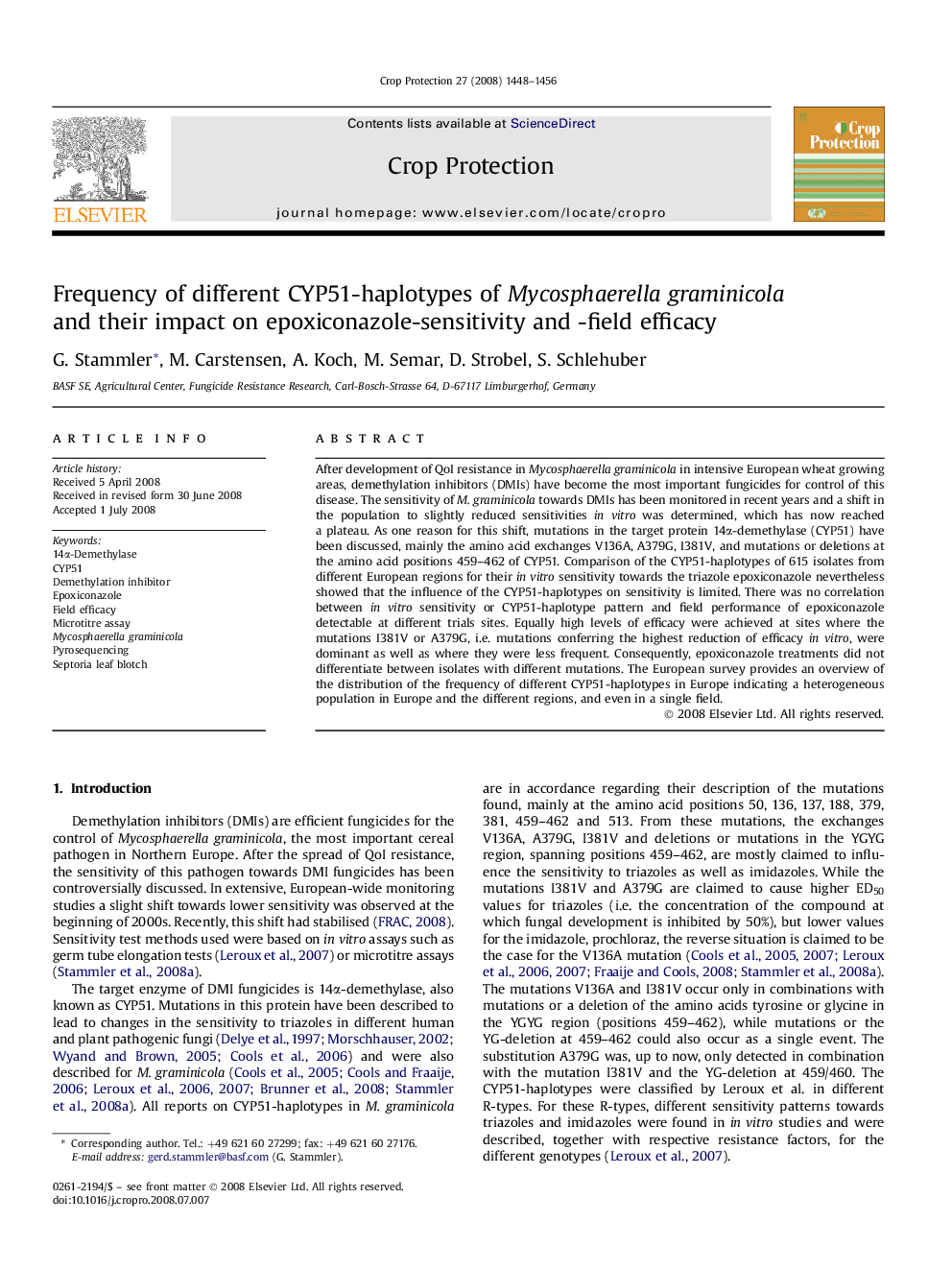| Article ID | Journal | Published Year | Pages | File Type |
|---|---|---|---|---|
| 4507709 | Crop Protection | 2008 | 9 Pages |
After development of QoI resistance in Mycosphaerella graminicola in intensive European wheat growing areas, demethylation inhibitors (DMIs) have become the most important fungicides for control of this disease. The sensitivity of M. graminicola towards DMIs has been monitored in recent years and a shift in the population to slightly reduced sensitivities in vitro was determined, which has now reached a plateau. As one reason for this shift, mutations in the target protein 14α-demethylase (CYP51) have been discussed, mainly the amino acid exchanges V136A, A379G, I381V, and mutations or deletions at the amino acid positions 459–462 of CYP51. Comparison of the CYP51-haplotypes of 615 isolates from different European regions for their in vitro sensitivity towards the triazole epoxiconazole nevertheless showed that the influence of the CYP51-haplotypes on sensitivity is limited. There was no correlation between in vitro sensitivity or CYP51-haplotype pattern and field performance of epoxiconazole detectable at different trials sites. Equally high levels of efficacy were achieved at sites where the mutations I381V or A379G, i.e. mutations conferring the highest reduction of efficacy in vitro, were dominant as well as where they were less frequent. Consequently, epoxiconazole treatments did not differentiate between isolates with different mutations. The European survey provides an overview of the distribution of the frequency of different CYP51-haplotypes in Europe indicating a heterogeneous population in Europe and the different regions, and even in a single field.
